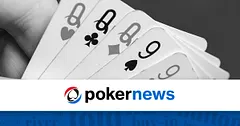Angle Shooting
Angle Shooting is a controversial tactic often used in poker where a player attempts to bend the rules to gain an advantage. It's not explicitly cheating but is generally viewed as unethical or unsportsmanlike behavior in the poker community. Many players in the highest profile tournaments have attempted to Angle Shoot and have faced widespread condemnation from the wider poker community.
Understanding Angle Shooting in Poker
Angle shooting is a tactic that walks the fine line between cheating and gamesmanship.
Angle shooters use a variety of techniques to gain an edge, such as misleading statements about their hand, intentionally misplaying a hand, or exploiting a rule ambiguity. It’s important for all players to be aware of these tactics, as they can be used against you.
It is important to note that angle shooting is not technically against the rules, as it does not involve actual cheating or breaking any rules. However, it is considered unethical because it abuses the spirit of the game.
Example of Angle Shooting in Poker
One common example of angle shooting is the "slow roll." In this case, a player with a winning hand delays revealing their cards in order to create a false sense of hope in their opponent. This can unsettle opponents, causing them to go on tilt and lead to them making poor decisions in future hands. That being said, sometimes a player might seem like they're Angling in the form of a slow roll, when in reality it's just a nit roll (where a player has an obvious call but takes their time genuinely pondering their action).
Another example is when a player makes a bet but intentionally doesn't put enough chips into the pot, pretending it was a mistake. This can cause confusion and lead to their opponent making a decision based on incorrect information.
A player might also use ambiguous wording when declaring their actions to mislead their opponents. For example, they might say "I call... and raise" which can confuse opponents and lead them to react in a way that benefits the angle shooter.
A final example of an Angle is pretending to fold your cards to gauge a reaction from your opponent. From the information gathered, you could then make a more-informed decision on the action to take. This is definitely an Angle, though, and would be very controversial.
Here are some sentences using the term angle shooting:
- "Watch out for Bob, he's known for angle shooting."
- "I can't believe he tried to pull an angle in the last hand."
- "That was a clear case of angle shooting, he intentionally misled us about his bet."
Angle Shooting in Poker FAQs
Is angle shooting considered cheating in poker?
While angle shooting is not technically considered cheating, it's seen as unethical and frowned upon by many players in the poker community.
What's the difference between angle shooting and bluffing?
Bluffing is a legitimate strategy in poker where a player pretends to have a stronger hand than they actually do. Angle shooting, on the other hand, often involves misleading tactics to trick opponents.
How can I avoid becoming a victim of angle shooting?
The best way to avoid angle shooting is to be aware of the common tactics used and to always pay close attention to the actions of the other players at the table.
Can you be penalized for angle shooting in a poker tournament?
Yes, some poker tournaments may penalize players for angle shooting, especially if it's a repeated offense.
What should I do if I suspect someone is angle shooting?
If you suspect someone is angle shooting, bring it to the attention of the dealer or tournament director. They can then make a judgement call on the situation.



